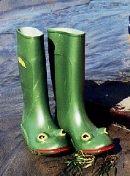I taught it in Myth & Folktale class, where it was either not read, or read and reviled by those philistines. It was crushing for me, because I always want my students to enjoy their readings; because I love DWJ and can't abide criticism of her books; and because it includes so many aspects of myth and folktale that we'd already talked about in class.
Some of the myth/folklore elements in the book, in no particular order:
- Arthurian legend (The Merlin, the Count of Blest)
- Welsh legend (Gwyn ap Nud)
- British faerie beings (Little People, the invisible people, etc)
- Geoffrey of Monmouth's Red and White Dragons myth (which, yes, is related to Arthurian legend, but is also its own thing)
- flower lore (speedwell, mullein, purple vetch...)
- city lore (Salisbury, Old Sarum, Manchester in a red dress)
- totem or spirit animals
- standard magic lore (earth magics, etc)
- basic fairytale motifs (things happening in threes, especially the "rules" of the dark paths)





No comments:
Post a Comment